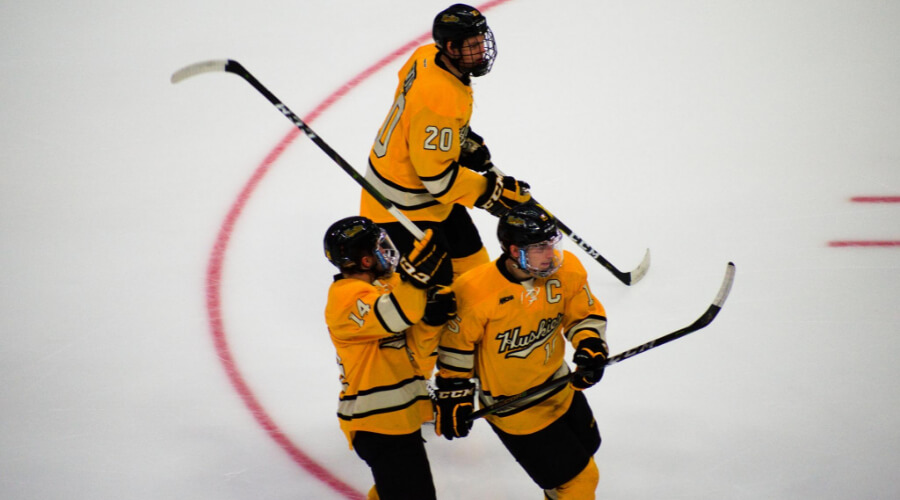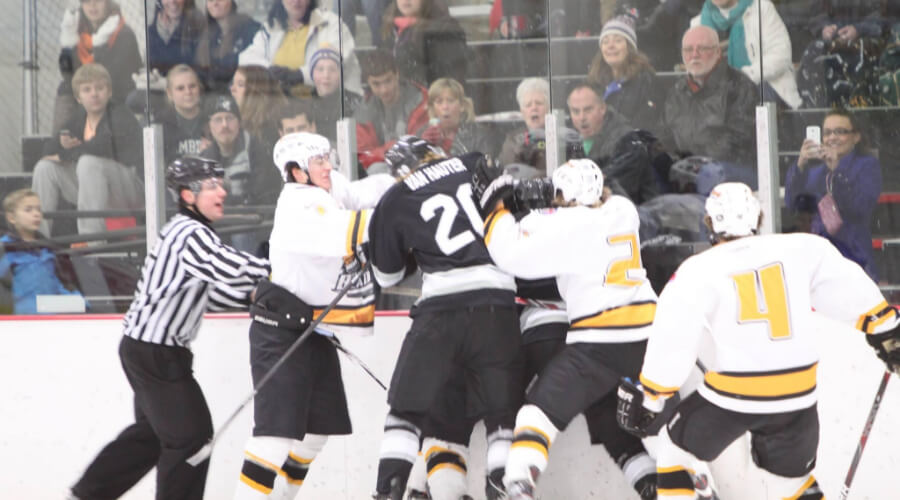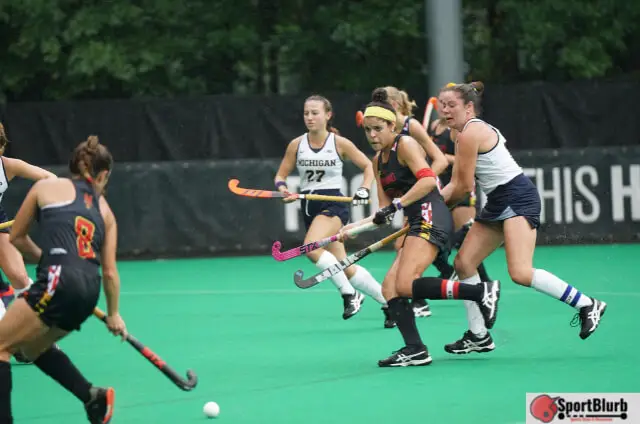Last Updated on October 11, 2023 by Alex PT
There are a number of reasons why fighting is allowed in hockey, including:
- To deter other types of rough play
- To protect star players
- To create a sense of solidarity among teammates
Why Is Fighting Allowed In Hockey?
- Maintaining Sportsmanship:
Fighting in hockey is viewed as a way of maintaining sportsmanship. It serves as a regulating system for the unwritten rules of conduct in the sport. When an undesired action is taken by a player, fighting can serve as a form of vigilante justice to restore balance. - Game Strategy:
Fights can shift the momentum of a game. A well-timed fight can inspire a trailing team and possibly intimidate the opponent. It could give the team the mental edge they need to overturn a deficit. - Emotional Release:
Hockey is a physical and intense sport where emotions run high. Allowing fights serves as an emotional outlet for players. - Team Protection:
Through fighting, players protect their teammates, particularly the star players who might be targeted by opponents. This ensures safety for important players on the team and breeds camaraderie, solidarity and a sense of team unity. - Crowd Entertainment:
Many spectators enjoy the fights. They add an extra layer of thrill and drama to the game, enhancing the overall spectator experience.
Fighting rules in hockey
Fighting in hockey is governed by specific rules to maintain control and player safety while allowing for physical play. The key rules and aspects of fighting in hockey are as follows:
- Penalties: Fighting results in players receiving a major penalty (five minutes) for fighting. In some cases, additional penalties like a game misconduct or instigator penalty may be assessed to the instigating player. This can result in their ejection from the game.
- Gloves Off: A fight begins when both players willingly drop their gloves and engage in a fight. It’s important that both players consent to the altercation, as unwilling participants may face more severe penalties.
- Visors and Helmets: Players who wear visors or helmets must remove them before a fight. Failing to do so can result in additional penalties.
- Third Man In: The “third man in” rule penalizes a player who joins a fight already in progress. This player typically receives an automatic game misconduct.
- Heavy Consequences: Multiple fights in a game can lead to ejection from the game and potential suspensions. The league may impose further discipline for excessive fighting.
- Safety Precautions: Referees are responsible for stopping a fight if it becomes excessively dangerous or if one of the players is in a vulnerable position.
- Unwritten Code: Fighting often serves as a form of player self-policing and enforcing an unwritten code of conduct in the sport. It can deter dirty plays and protect star players.
- Entertainment: Fighting has historically been part of the entertainment value of the sport, appealing to some fans.
Fighting Procedure

As soon as a fight starts during the game, every other player on the field at the time must go back to their bench and sit down while the referees go back to their crease too. No player is allowed to remove his helmet, taking off your helmet would result in a minor penalty later. During the fight, because of all the hassle and disturbance, your helmet might fall off, that is acceptable but don’t take it off by yourself because then as a player, this could cause you to face penalization later. The fight will end as soon as one of the players falls on the ice. This is when the fight has to stop.
The fights in hockey started just how the fights outside hockey start. When two players have a misunderstanding and they are angry at each other then an issue might arise and then sometimes they get into fights with that. It isn’t considered a fight until the two players have made it clear that they are going to be fighting. When the other players and officials are sure that these two people will fight, that is when they will leave the ground for the players to settle the disputes they have.
Once the fight starts, the whistle will be blown by the referee signifying that the match has to end and so the whole procedure begins until it comes to an end. After the whole issue and roughness, the fight comes to an end most times when one player has hit the Ice. The fight would end and they just continue from there.
The Aggressor
The term aggressor in a fight is used to indicate the winner of the fight in a hockey game. The aggressor is allowed to fight even after he has finished beating up the other player. He is allowed to get into another fight after that one. There is always a penalty for the aggressor.
The Instigator
The instigator follows the name, he is the instigator in the fight. What he does is that he instigates the fight. Some people that could be deemed as the instigator are either the player who throws down first or the player who talks to the other player and helps to resolve the fight. In the fight, the instigator also gets a minor penalty after the fight. When they confirm who the instigator and the aggressor are. If they are different people then they would both go in for their penalties. If the instigator doesn’t end up being the aggressor then he would get a lighter penalty.
Penalties For Fighting

After the fight, when the referee is ready to dish out penalties to each player for fighting then they would first classify their aggressor and instigator in the fights. After they establish who is on both sides, they will decide who goes for what penalty and who doesn’t. The procedure has to be followed because they need it to assign the penalties and fines properly.
Sometimes a player could be the instigator and the aggressor of the fight. When an issue arises like that then the player would go in for four different penalties. First, he would be given the instigator minor penalty then the major penalty for fighting during the game, he would also face 10-minute misconduct for instigating the fight, the last is a misconduct penalty. Every one of these penalties is recorded and this is what they use to prepare the player’s fines and penalties.
The Penalty Box
A penalty box is a place in a hockey pitch where players are sent to after they are involved in a fight as the name is, it is a place they go to face their penalties. That is why it is called the penalty box. When a player visits this box, her is only allowed back on the ice when he has served the time for the penalty. For a fight, the players mostly get a duration of two to ten minutes in the box.
Conclusion
You must now understand what the meaning is when people say that they allow fights in hockey games. This doesn’t mean that the player goes unpunished.
References:
https://www.sportingnews.com/us/nhl/news/why-fighting-allowed-hockey-nhl/bvgxkp8aqhzum7d4hppjaqvy
https://theweek.com/feature/briefing/1018995/why-fighting-is-allowed-in-ice-hockey

Hi! I’m Alex PT. I hold a Bachelor’s degree in Sports Management from Indiana University and have over seven years of valuable experience working in a Sports Event Management Company. I founded SportBlurb with the passion for bringing you the latest, most insightful, and engaging content in the world of sports. So, whether you’re a die-hard fan or want to stay informed, I’ve got you covered!

